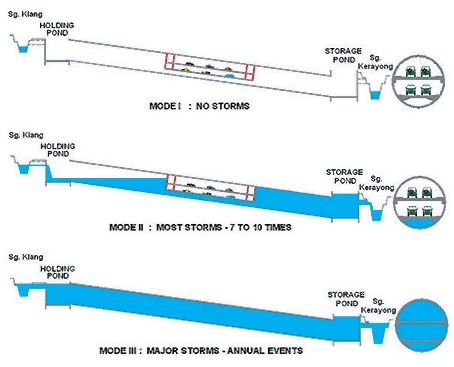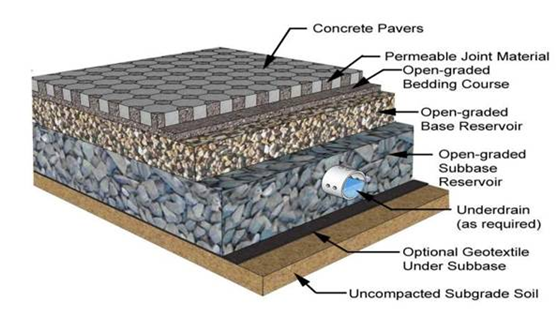5. When summer comes, the rain increases. Recently, it rained heavily in several cities in China, even hail in some district. The torrent rain is a challenge to the drainage system.Are there any effective strategies in drainage and flood prevention?
One of the significant problems in the PRC is that most cities have only minor, or pipeline drainage systems. In many countries, stormwater systems are typically comprised of both minor and major systems. The minor systems are designed to discharge less intensive rainstorms with a design return period of two to ten years. The minor systems commonly consist of underground pipes and ditches. On the other hand, major systems are designed for severe rainstorms with a design return period of 50 to 100 years. Major systems commonly include bypass tunnels, greenbelts, and roads which are used to handle the runoff which exceeds the capacity of the minor drainage system. In 2012, the Asian Development Bank supported a study with the Ministry of Housing and Urban Rural Development on urban storm water management in the PRC which identified this as being one of the biggest weaknesses of Chinese cities (http://www.adb.org/projects/45512-001/main) . The study identified a number of good examples in Asia such as Kuala Lumpur, and as well as many Western cities.
In Kuala Lumpur, a “Smart Tunnel” was constructed with multiple uses. The tunnel is a three-level structure of 12m diameter. The lower compartment is used for discharging runoff during normal rainstorms. The middle compartment is used for traffic in ordinary times and will be closed and utilized as a drainage tunnel in rainstorm events with a five-year return period and above. The upper deck and the whole tunnel will be fully closed from traffic in case of extreme rainstorms for discharge of stormwater.

Source: http://www.tunnelvisions.eu/projects/nieuwe-pagina/
The PRC has since enforced a number of new regulations which will improve and encourage the construction of urban drainage and urban flood-protection facilities, as well as introducing the sponge-city concept.
6. Recently, are there any new materials, devices, or latest technologies which could improve storm water management dramatically?
Some of the most significant technological advances related to storm water management can be seen in the evolution of permeable pavements. Over the past few years, this field has grown significantly. In the past, permeable pavement signified the placement of stones or pavers with gaps between them to allow water to filter through, which works well on a small scale. Now many permeable pavements are more complex, featuring multiple layers which serve to not only absorb water, but also filter and convey it to swales or other nearby waterways, thereby avoiding the overloading of storm drains and sewers. The variety and complexity of permeable pavements vary, giving developers and governments more options to find options within their budget to fit their design requirements. Permeable paving has been shown to reduce run-off, prevent siltation in water bodies, control pollutants, and allow the root systems of urban trees to coexist thrive within paved areas.

7. Finally, do you have any advice to those who are willing to start their career in storm water management? Or anything you would like to say to the Chinese audience?
For anyone interested in starting a career in storm water management, as well as for the Chinese audience, I would encourage them to educate themselves on the concepts of low impact development and nature-based solutions to urban drainage. Climate change will bring more frequent and potential more intense rainfall, which will surpass the rainfall levels that already cripple Asian cities. Even if cities fail to take action, individuals still have the capacity to do their part by engaging is activities such as rainwater harvesting, green roofs, and low-elevation greenbelts. At the end of the day, many individual actions can make a big difference to prevent urban flooding.
中国城镇供水排水协会(中国水协) 住房和城乡建设部城镇水务发展战略国际研讨会指定网站 国际水协会中国委员会工作网站
全国中长期科技发展十六项专项之一、中国十六大中长期重点专项 - 中国水体污染防治重大专项发布网站
技术支持:沃德高科(北京)科技有限公司 Copyright 2003-2011 版权所有 京ICP备12048982号-4
通信地址:北京市三里河路9号城科会办公楼201(100835) Email:water@chinacitywater.org Fax:010-88585380 Tel:010-88585381版权所有: 水世界-中国城镇水网